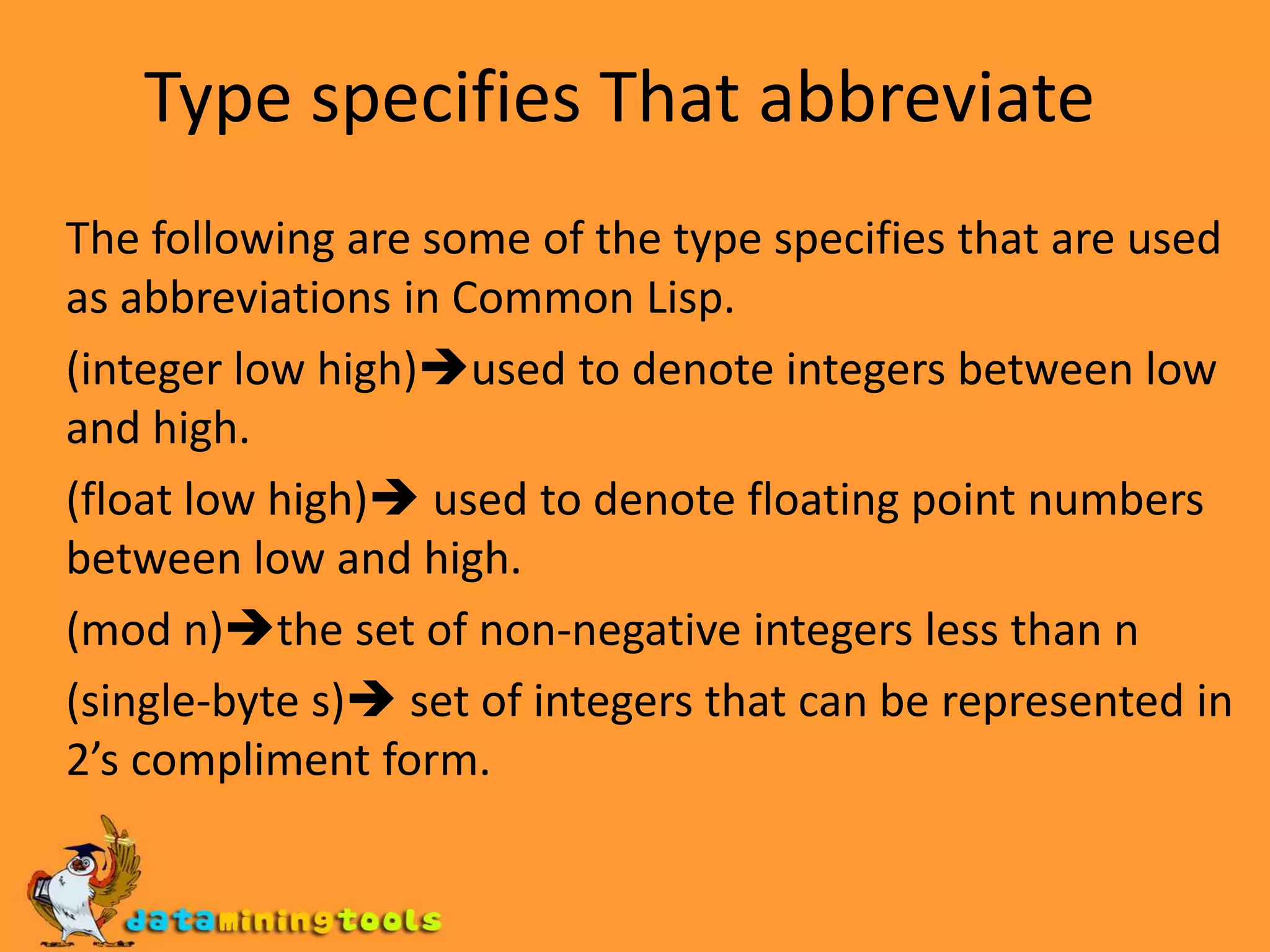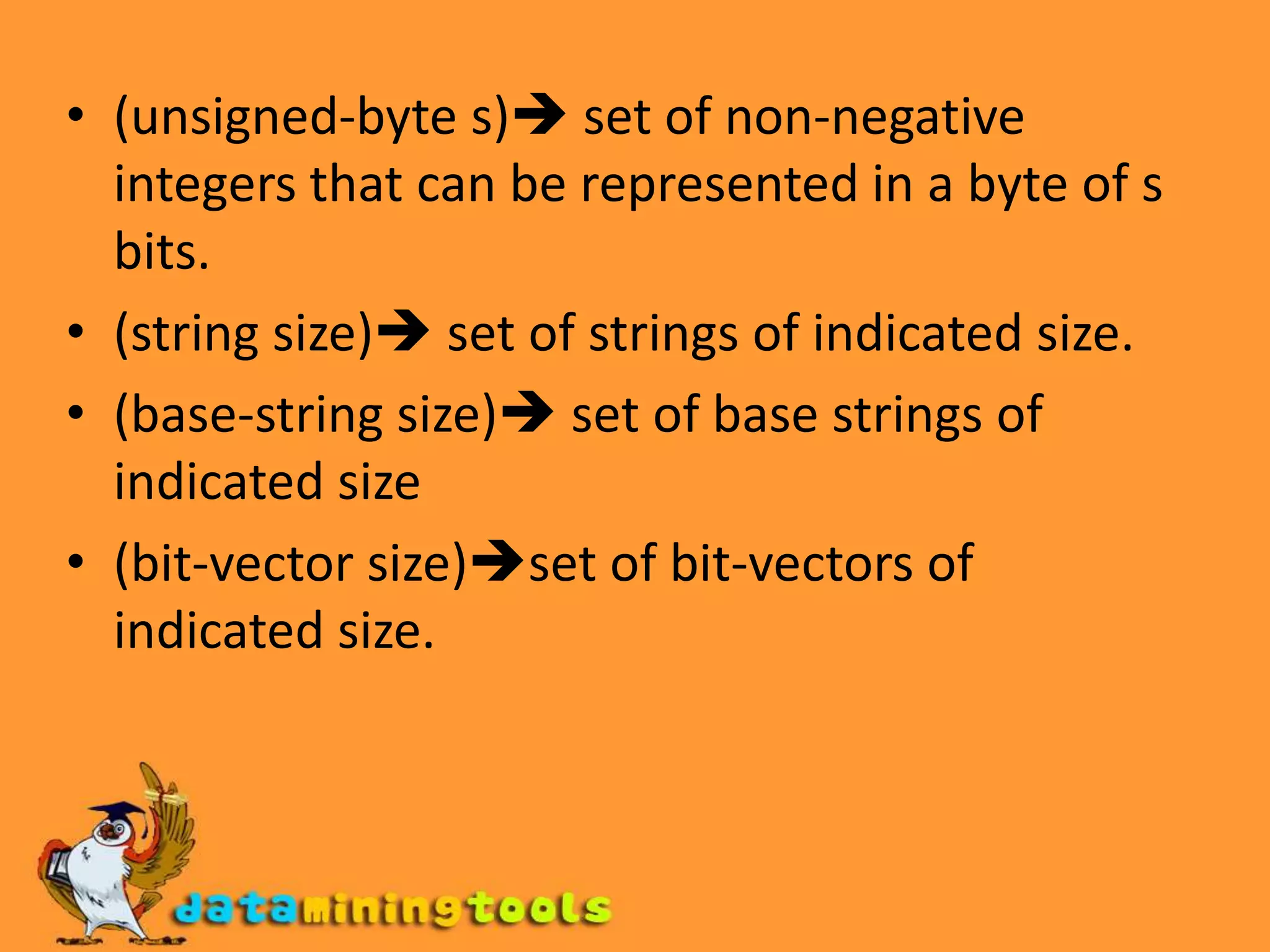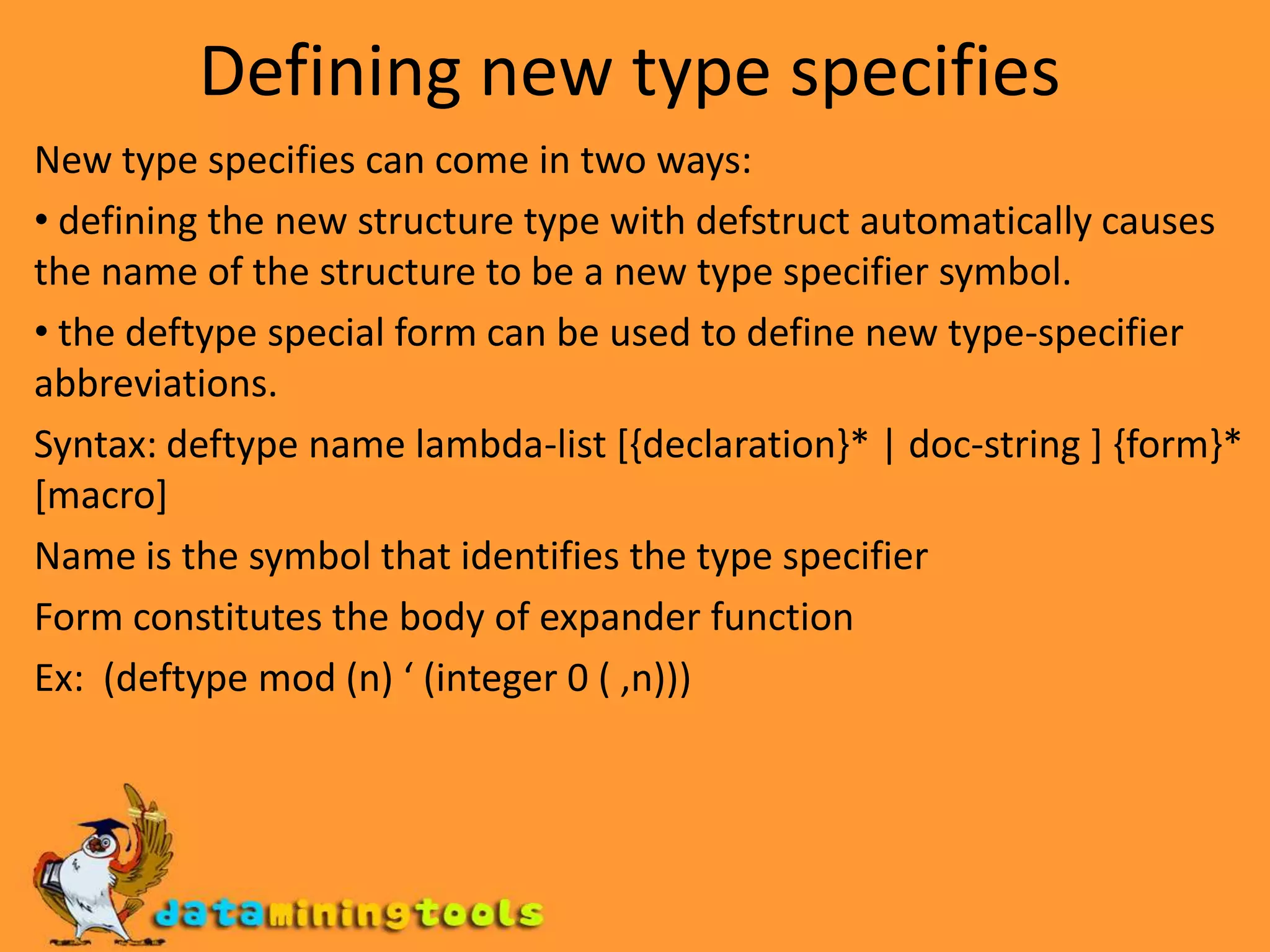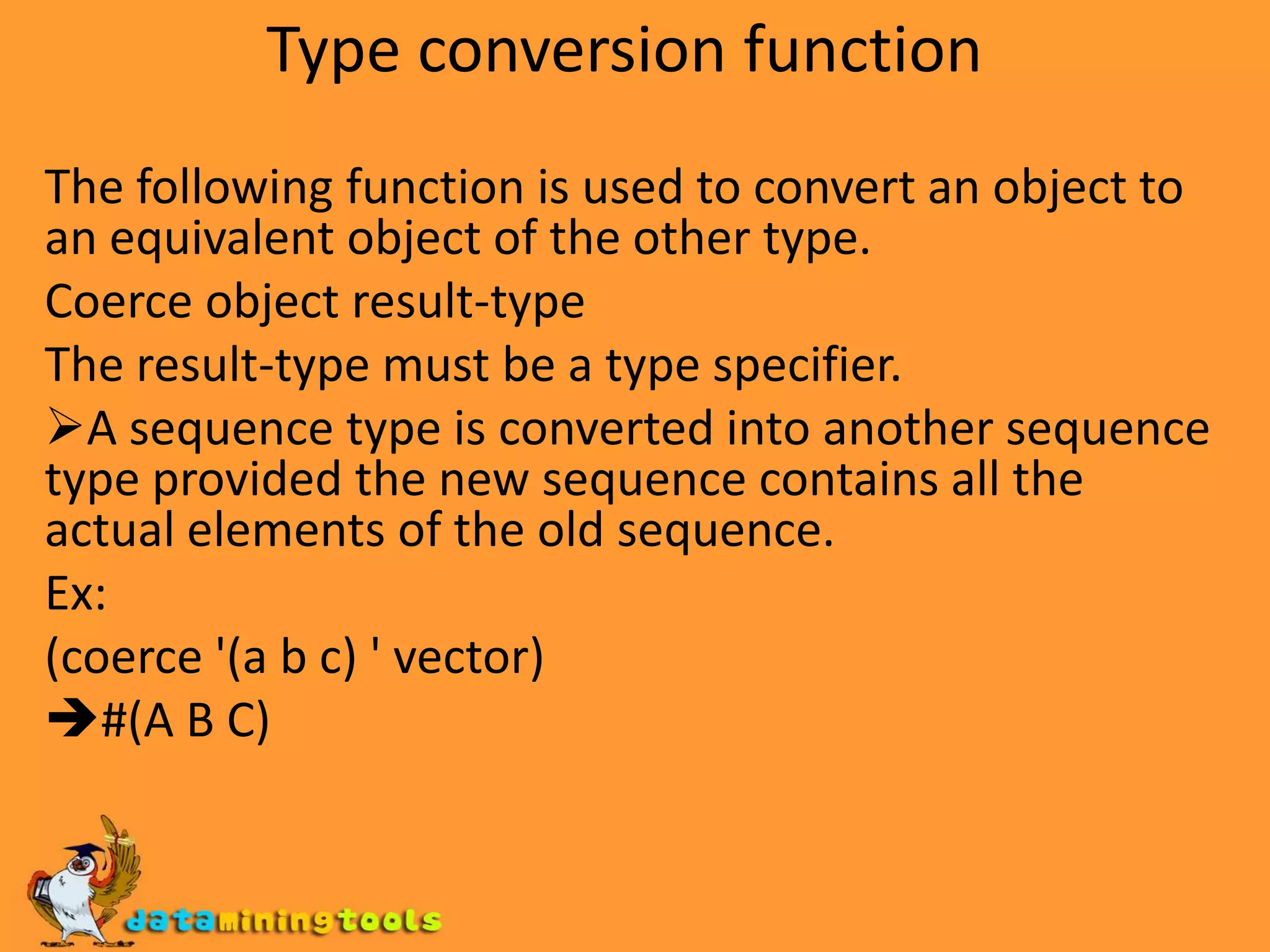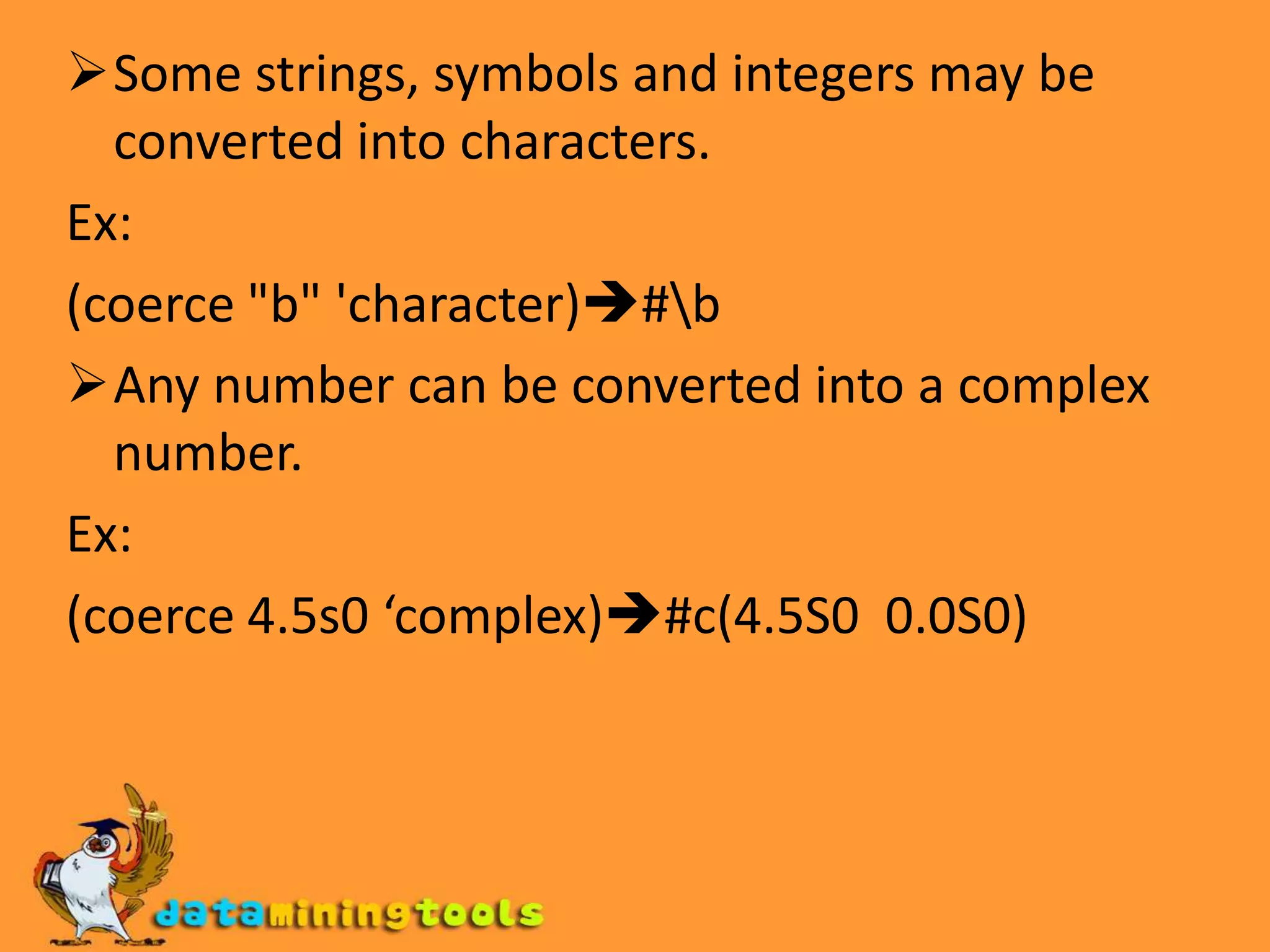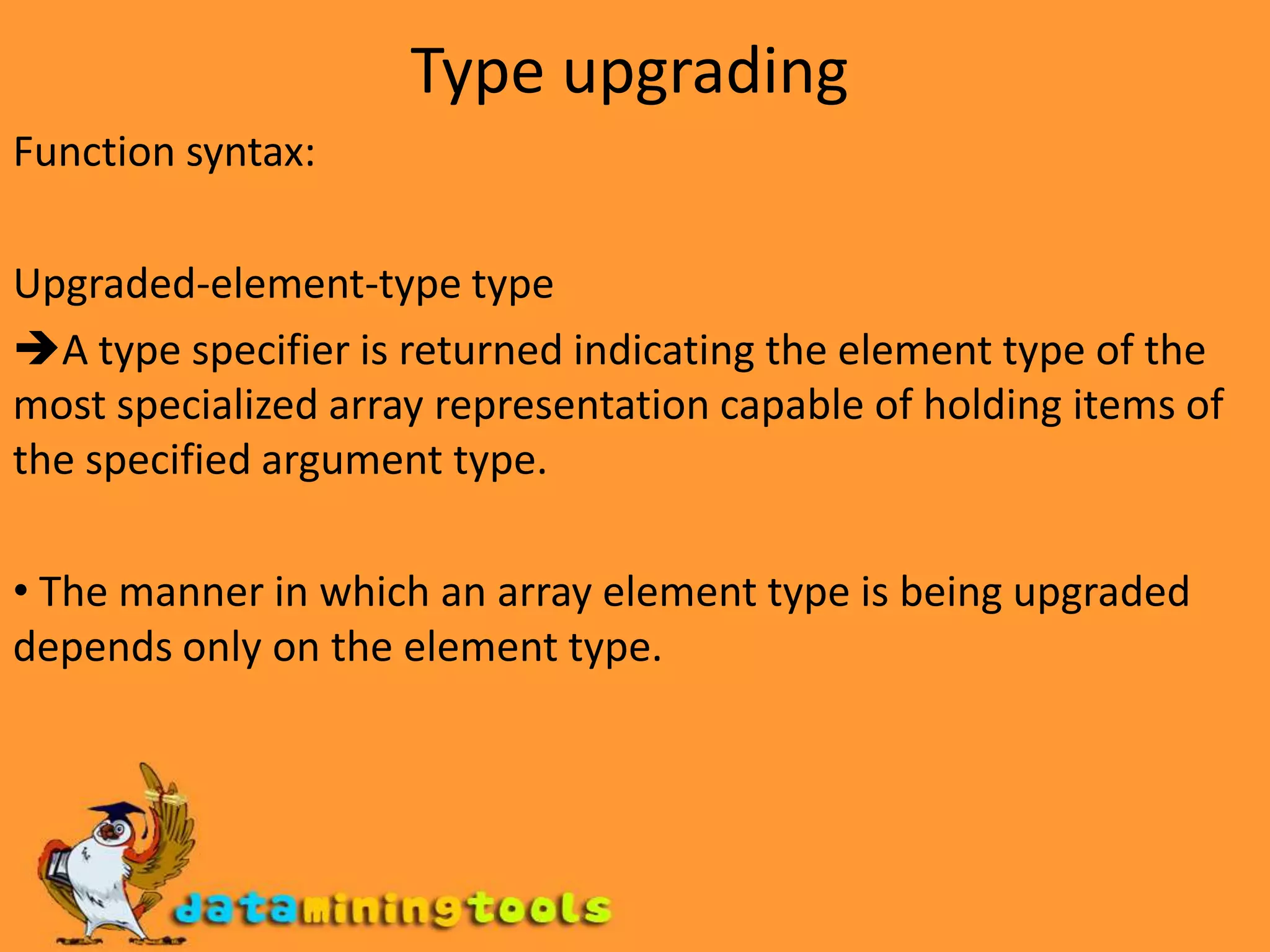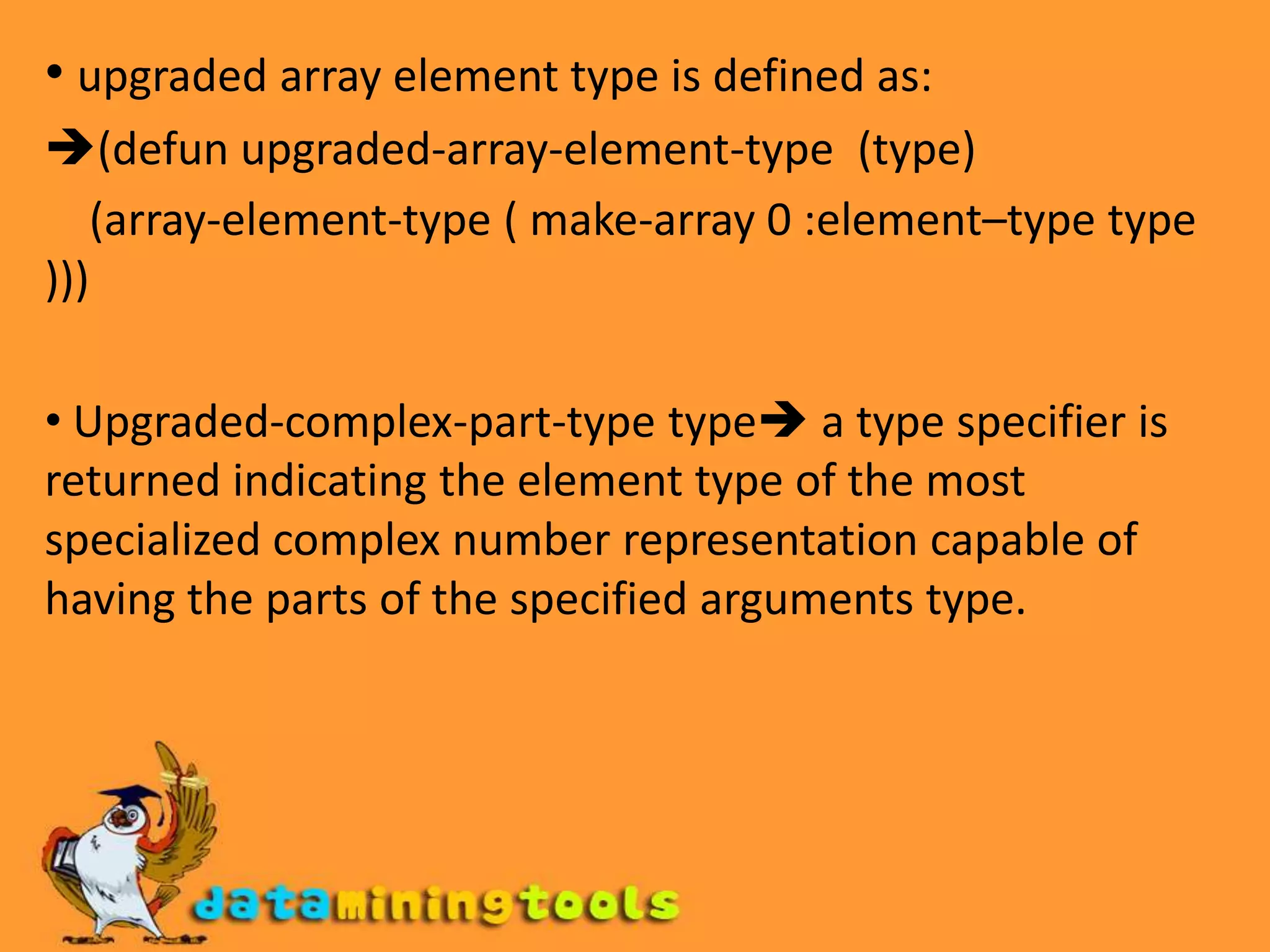Type specifiers in Common Lisp allow specifying the type of data. Standard type specifiers include symbols for types like number, string, array. Type specifiers can also be lists to further specify element types, dimensions, etc. New type specifiers can be defined using deftype. Functions like coerce and upgraded-array-element-type handle type conversions.
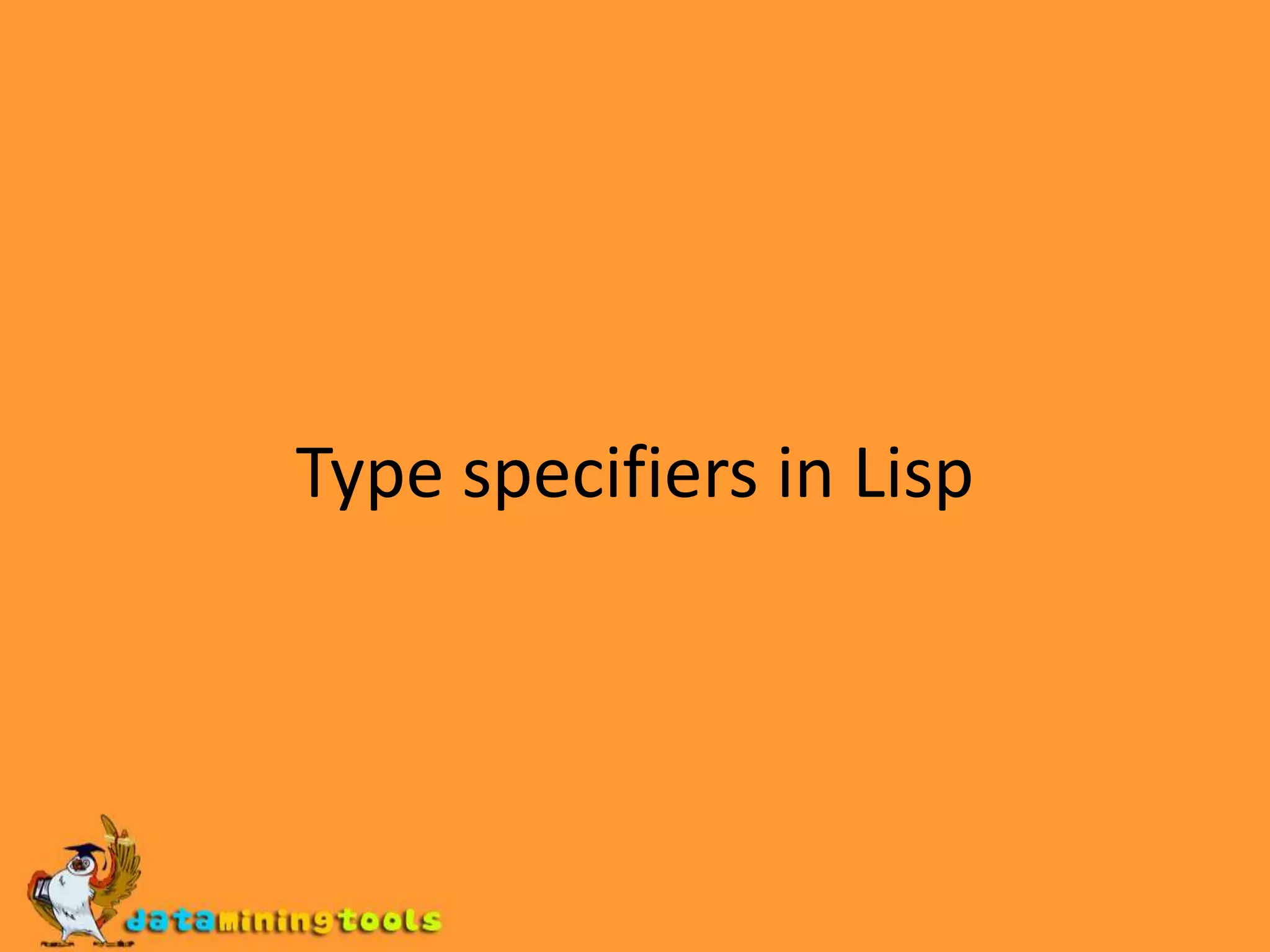
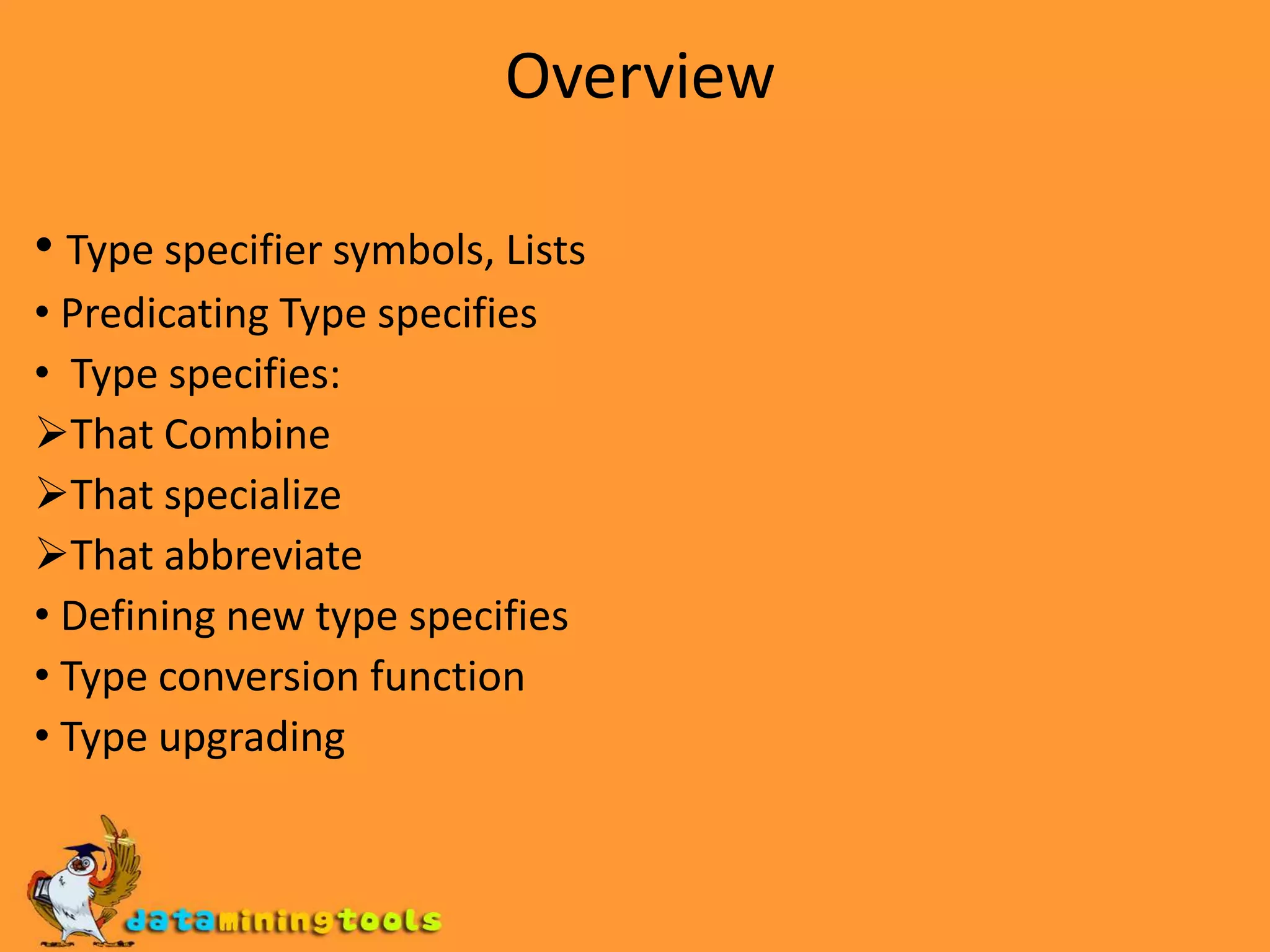
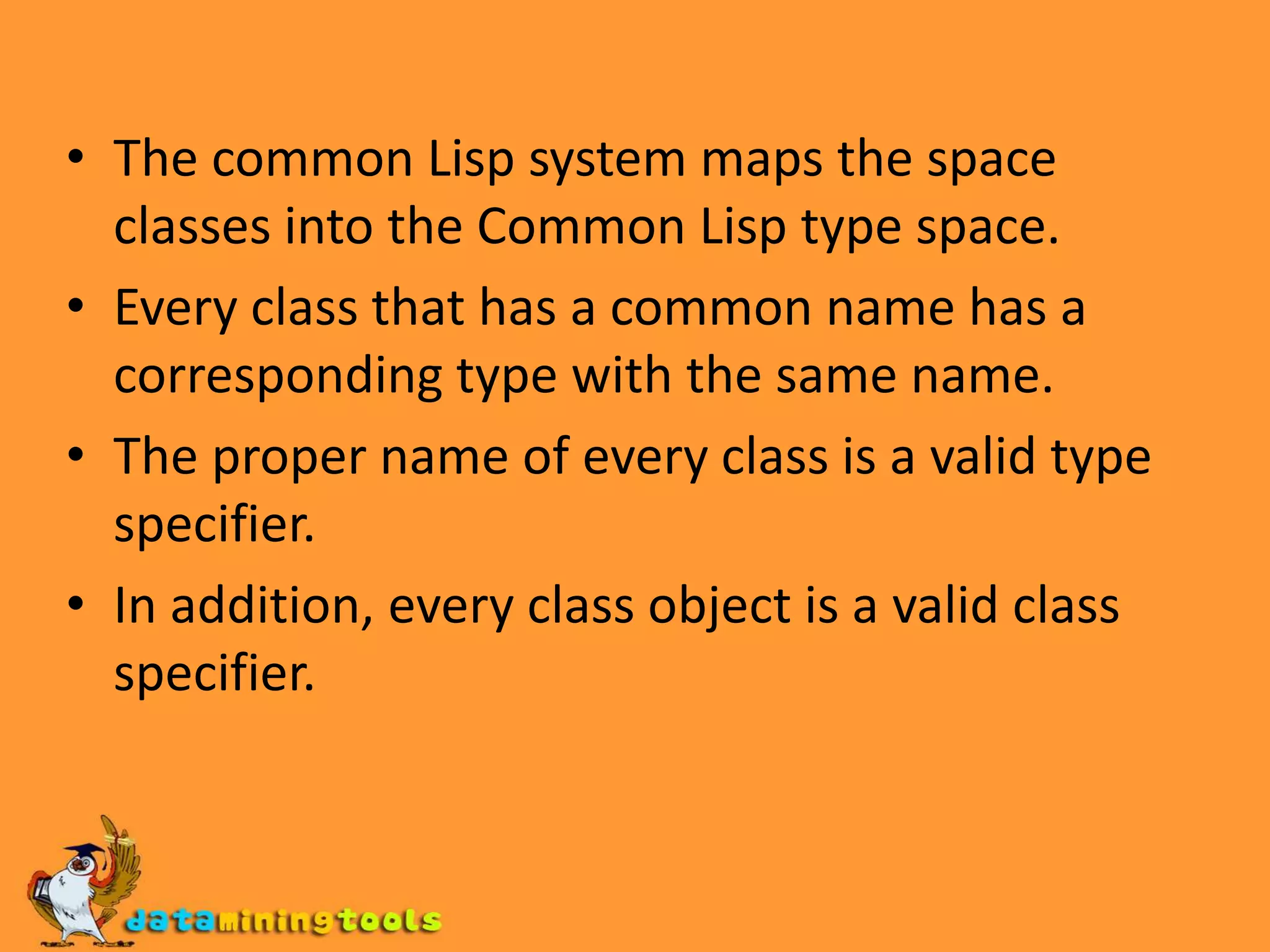
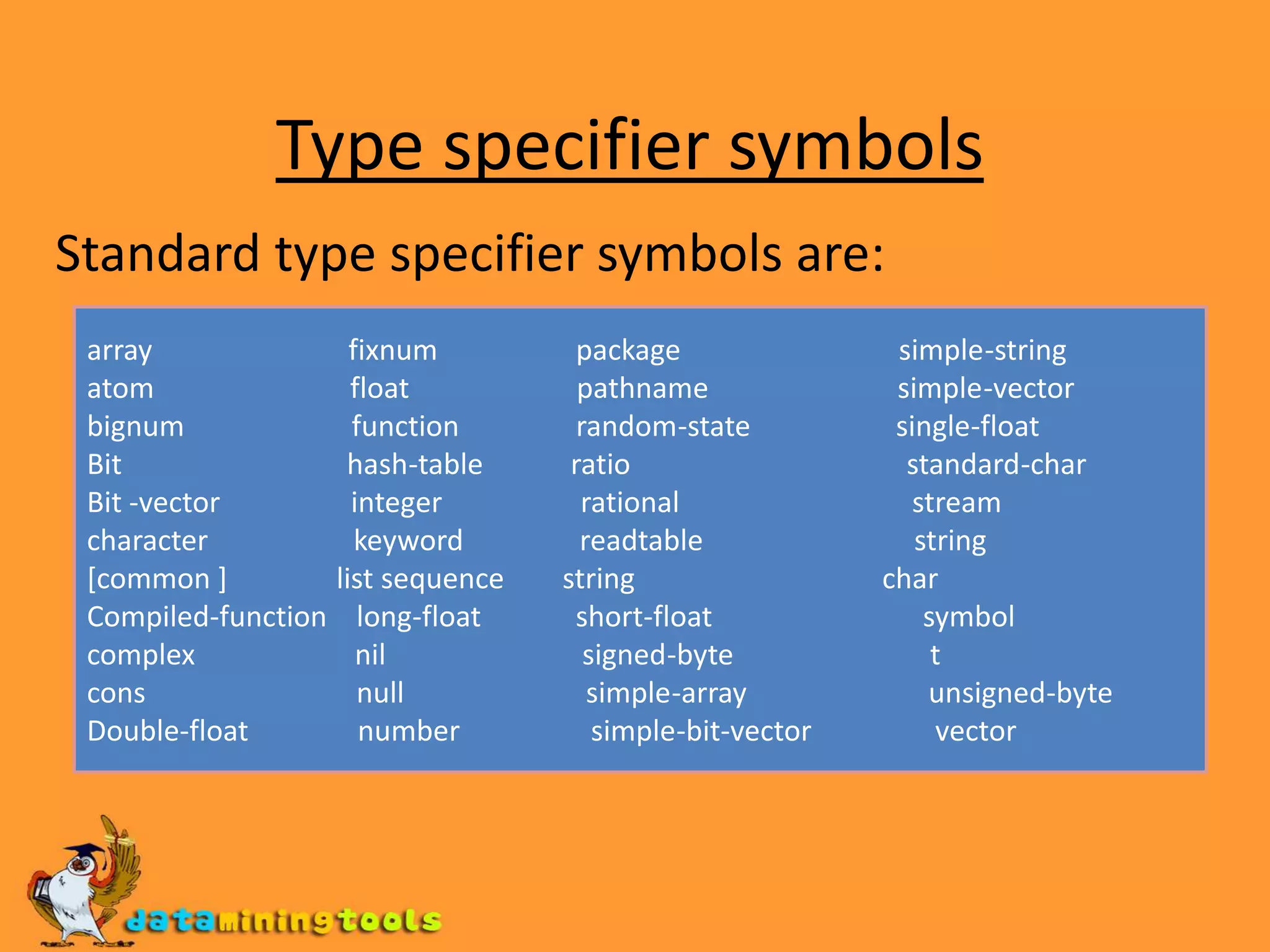
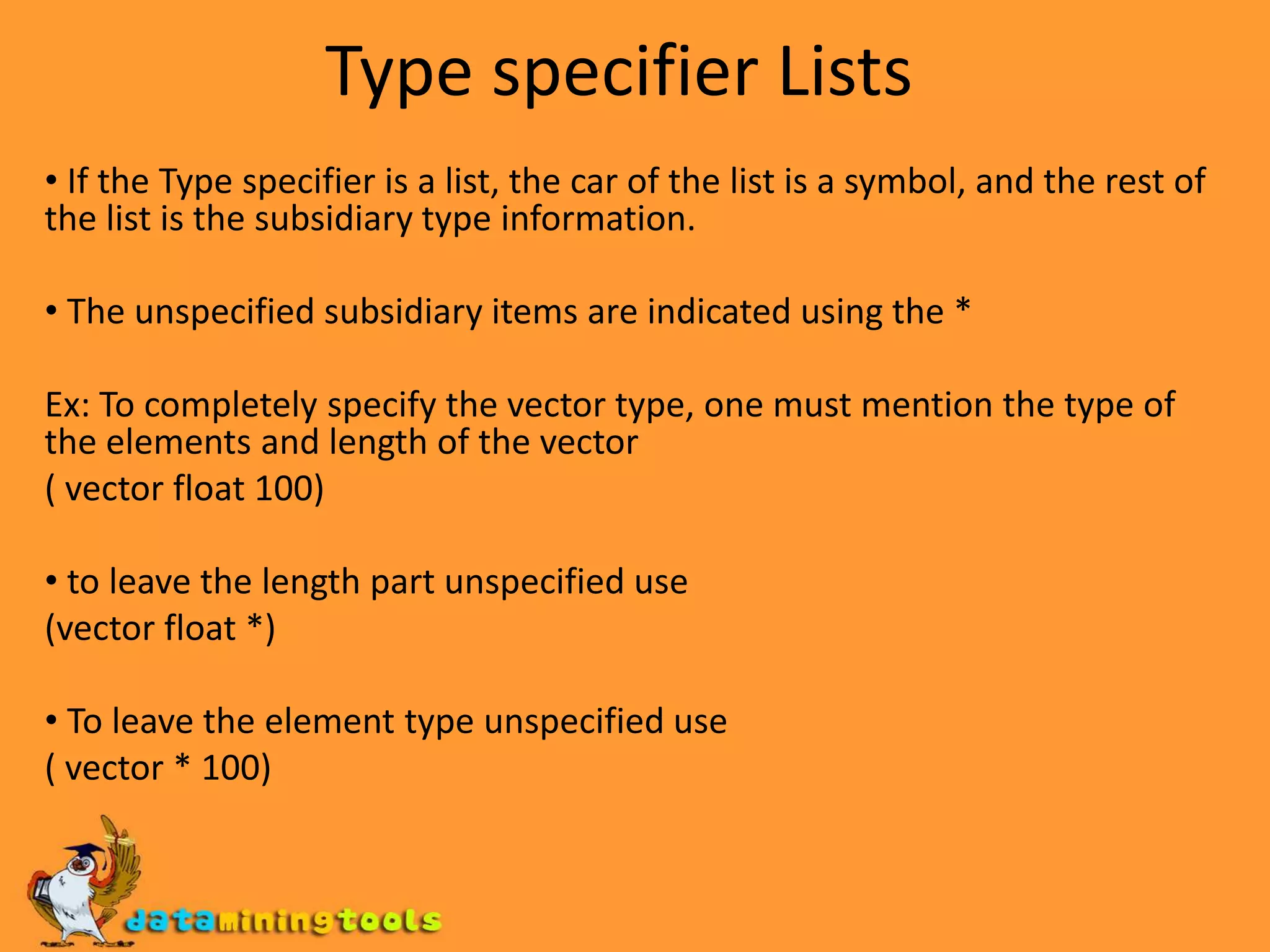
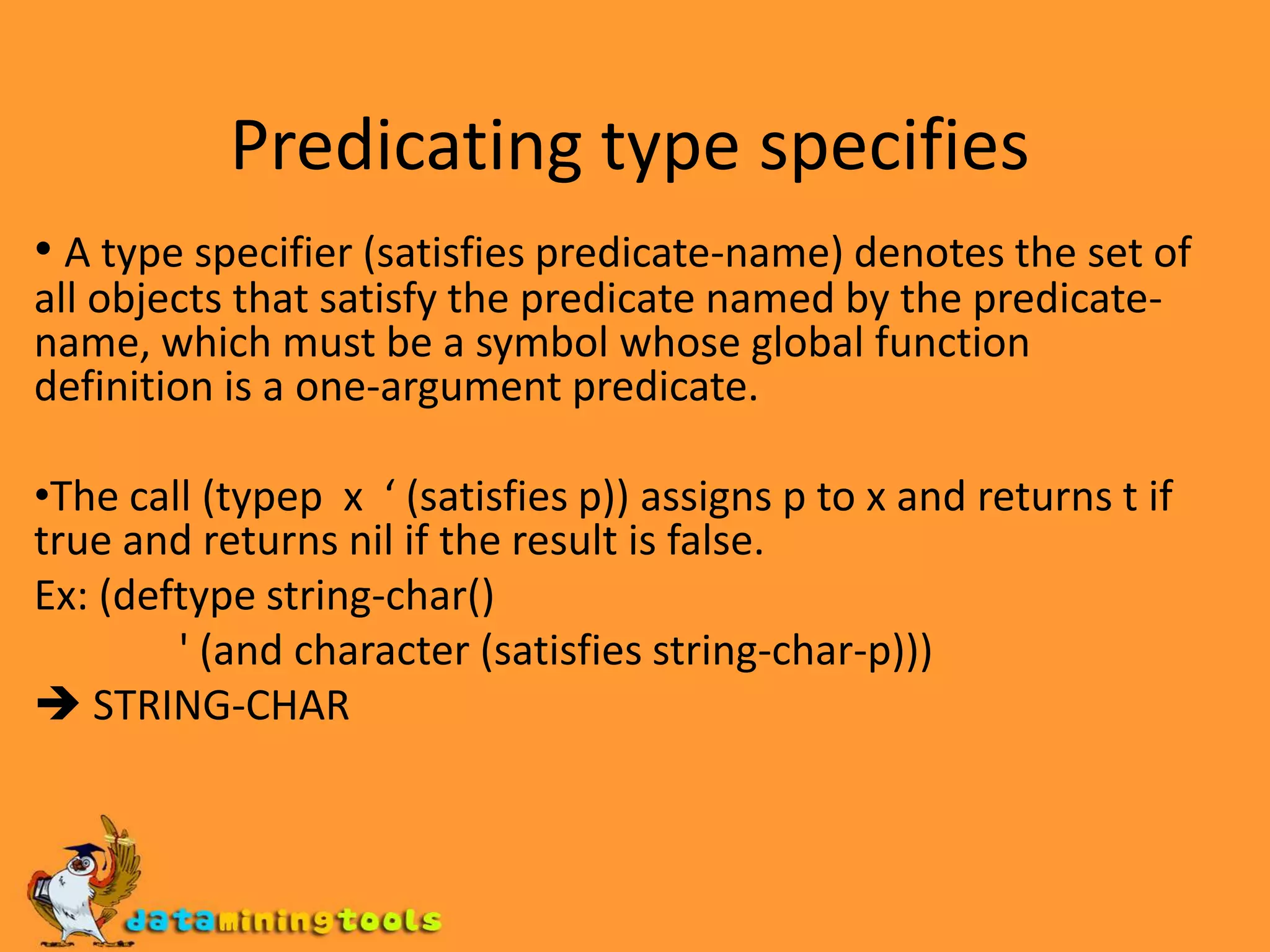
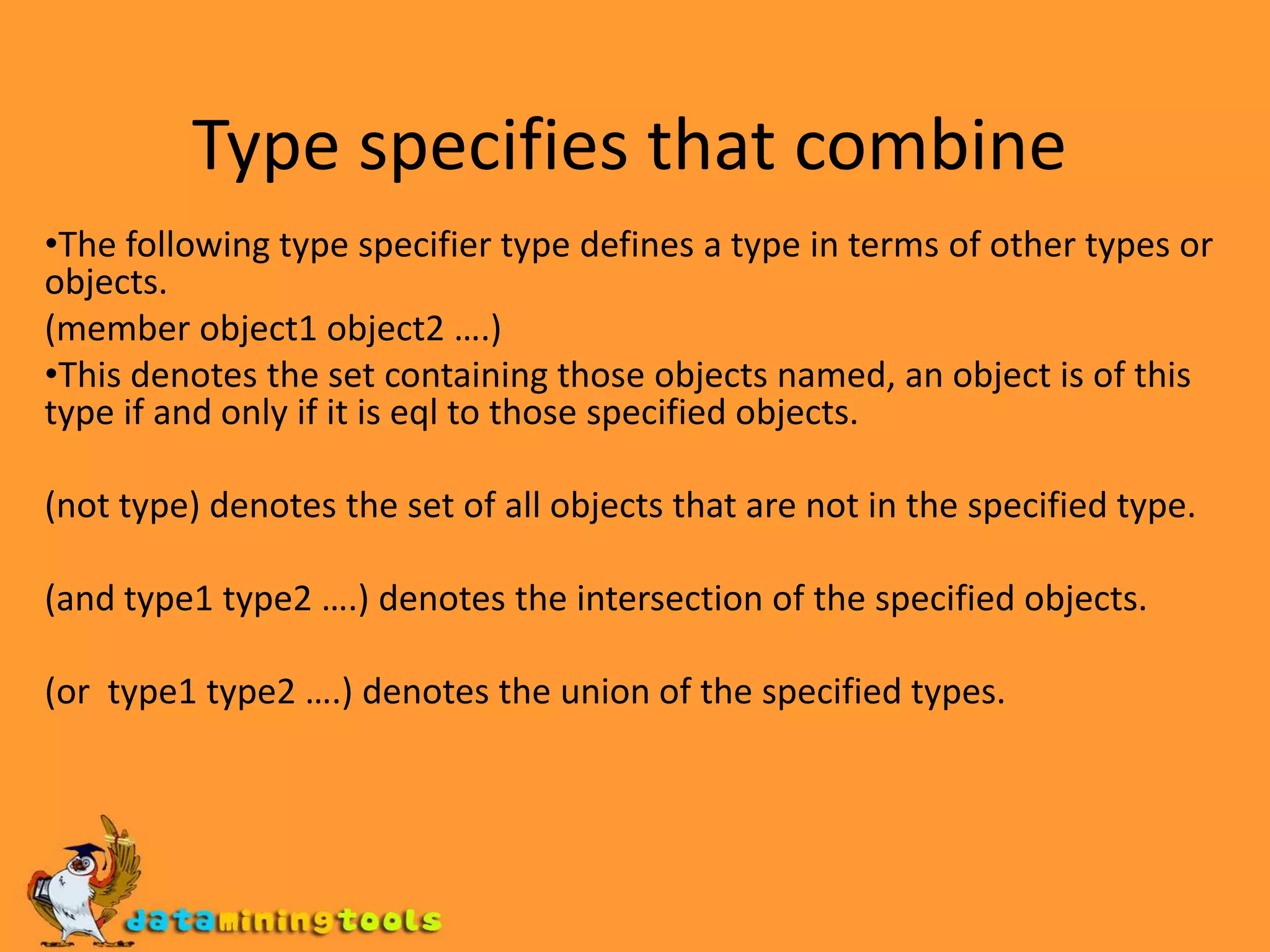
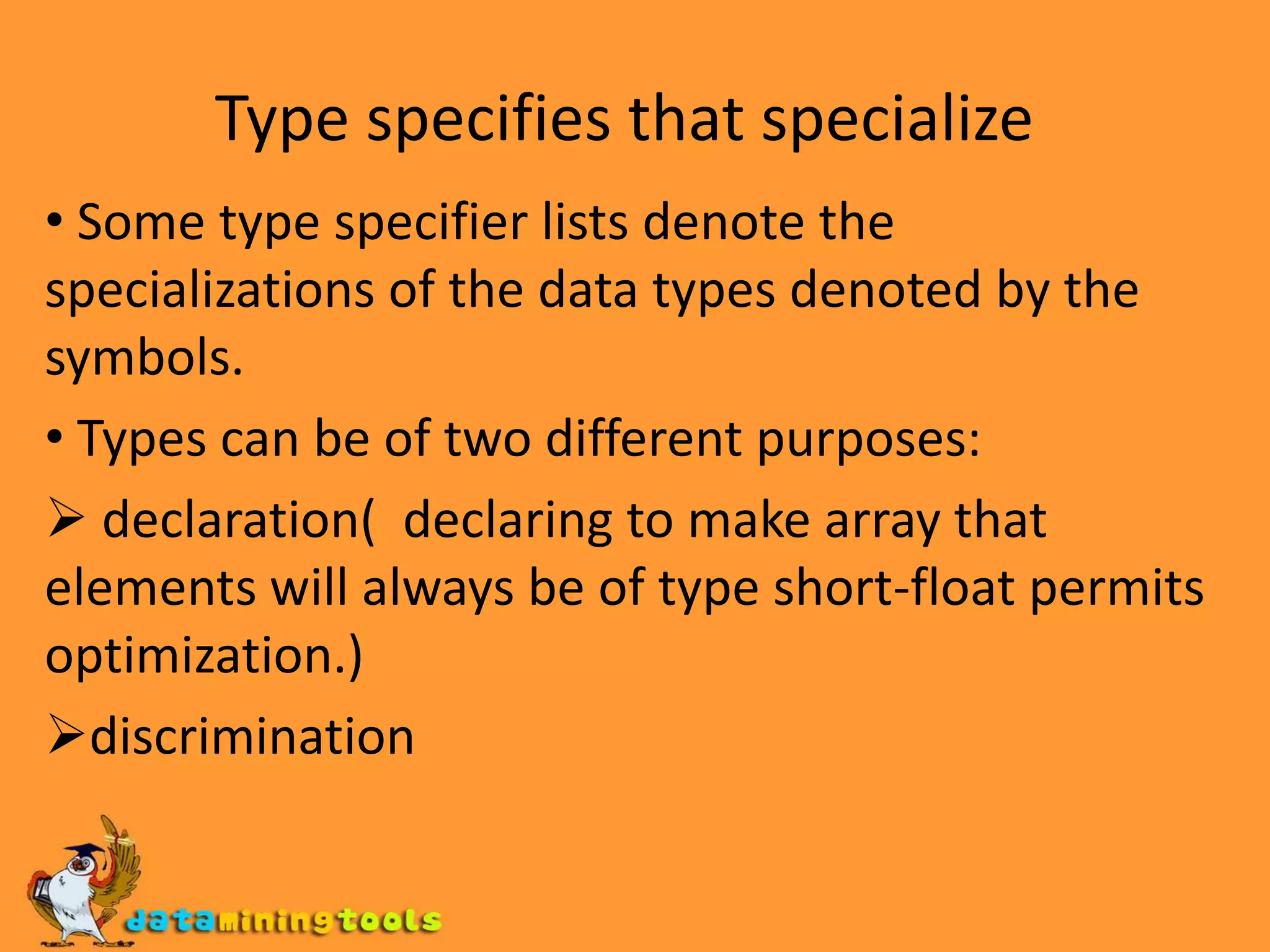
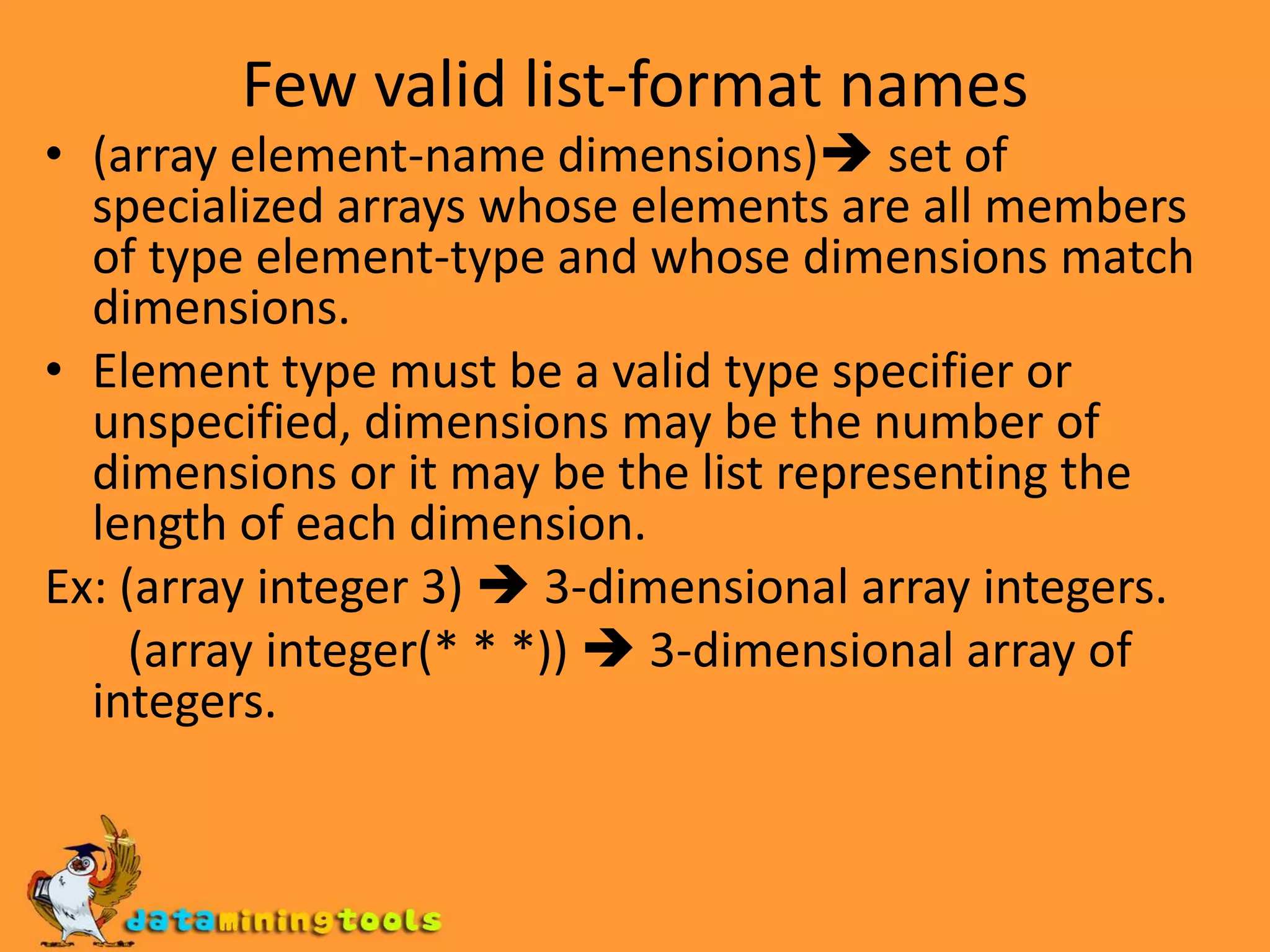
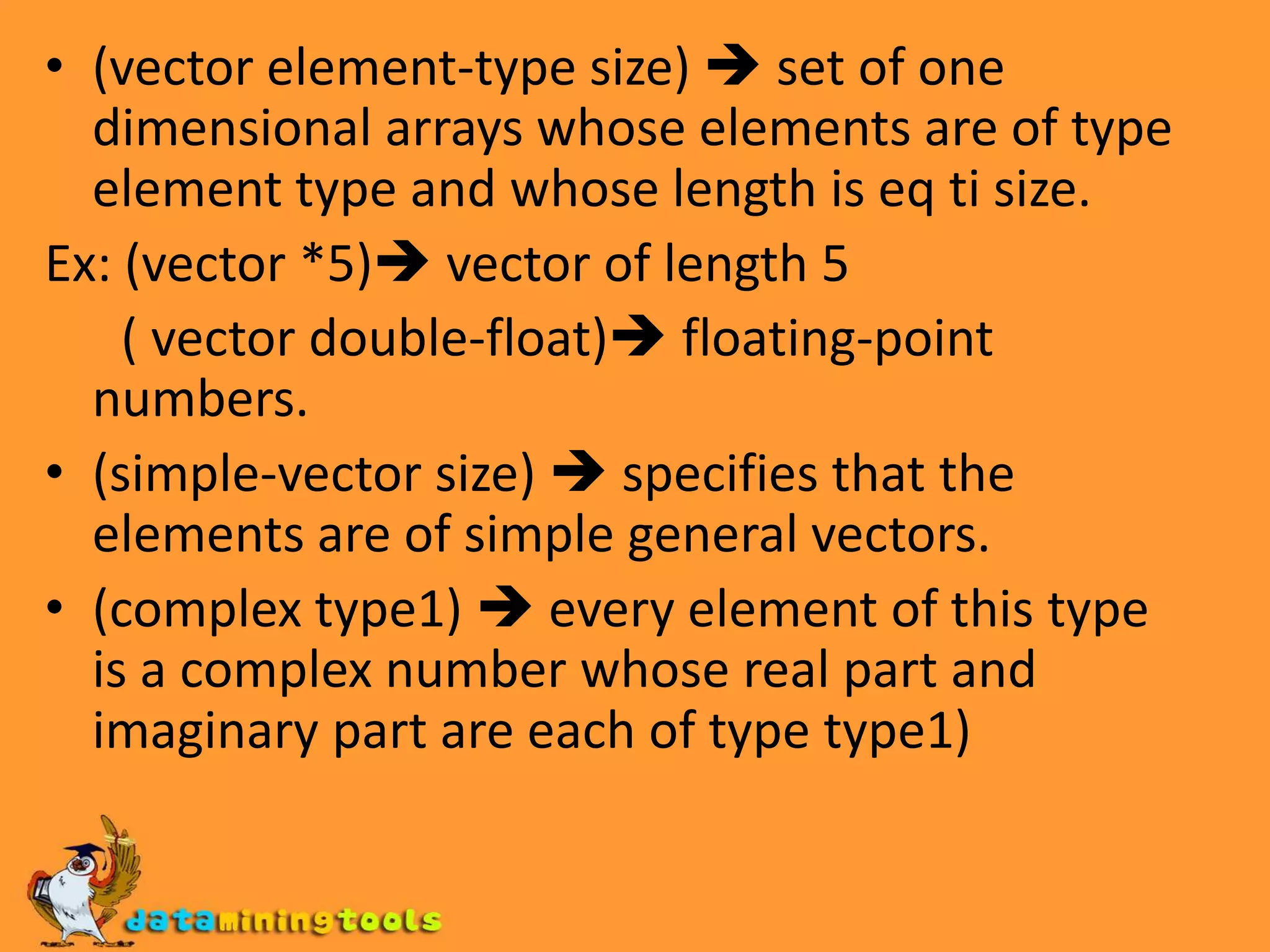
![Type specifier symbolsStandard type specifier symbols are:array fixnum package simple-stringatom float pathname simple-vectorbignum function random-state single-floatBit hash-table ratio standard-charBit -vector integer rational streamcharacter keyword readtable string[common ] list sequence string charCompiled-function long-float short-float symbolcomplex nil signed-byte tcons null simple-array unsigned-byteDouble-float number simple-bit-vector vector](https://image.slidesharecdn.com/typespecifiersinlisp-100316103537-phpapp02/75/LISP-Type-specifiers-in-lisp-11-2048.jpg)
